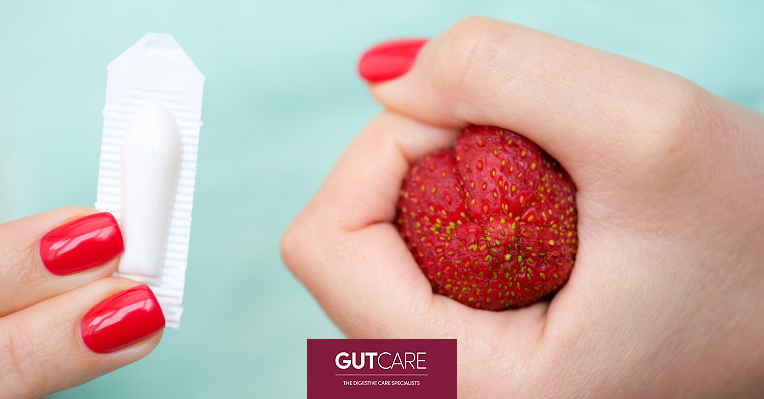Rectal Prolapse Vs Haemorrhoids: Know The Difference

While rectal prolapse and haemorrhoids can cause similar symptoms in your rectum, there are significant differences in the way both conditions develop and are being treated. Understanding the symptoms and signs of rectal prolapse versus haemorrhoids can be crucial in ensuring that you receive the correct treatment.
What is rectal prolapse?
Rectal prolapse occurs when the rectum (the end of the large intestine) protrudes through the anus. This happens when the rectal tissue becomes weak and loses its support, causing it to slide or fall out of place. Your rectum is located towards the end of your colon, just before the anus. It is where your stool prepares to exit your body. When your stool reaches the rectum, it triggers the urge to pass motion, and the pelvic floor muscles surrounding the rectum coordinate to release the stool out through your anus.
Some of the symptoms of rectal prolapse include constipation, faecal impaction, the feeling of incomplete evacuation and leakage of mucus or stool. Rectal prolapse tends to affect women more than men, especially after childbirth.
There are three types of rectal prolapse:
- Partial prolapse: Occurs when the lining of the rectum protrudes through the anus during bowel movements, but returns to its normal position afterwards.
- Complete prolapse: Occurs when the entire wall of the rectum protrudes through the anus, either during bowel movements or other activities like walking, and does not return to its normal position without manual assistance.
- Internal prolapse: Occurs when the rectum does not protrude through the anus, but it turns inside out and the inner lining of the rectum is visible outside the anus.
What are haemorrhoids?
Haemorrhoids, also known as piles, are swollen veins in the rectum or anus. They can cause discomfort, pain, itching, and bleeding. There are two common haemorrhoid types:
- Internal haemorrhoids: These types of haemorrhoids that develop inside the rectum and are usually painless, but they can bleed and prolapse (protrude through the anus) if they become too enlarged.
- External haemorrhoids: External haemorrhoids develop under the skin around the anus and can be painful, especially when sitting or during bowel movements. They may also cause itching and bleeding.
What are the common symptoms between the two conditions?
Rectal prolapse and haemorrhoids share similar signs, such as:
- Prolapsed tissue outside the anus
- Perianal discomfort
- Rectal bleeding(Blood in stools)
- Mucus discharge
- Straining and constipation
What causes rectal prolapse and haemorrhoids to occur?
Both conditions share similar causes. More often than not, repetitive straining when clearing your bowels or pelvic floor dysfunction after childbirth can play a significant role in contributing to both conditions. Usually, the following factors may increase your risk of developing either condition:
- You are currently pregnant or have given birth
- You have chronic diarrhoea or constipation
- You often strain to pass motion
If you do notice some of the more alarming symptoms mentioned above, such as rectal bleeding or mucus discharge, it might be a wise decision to make an immediate gastroenterology visit. Your gastroenterologist is able to evaluate the cause of concern.
Diagnosis of haemorrhoids
Haemorrhoids are typically diagnosed by conducting a physical examination.
There are four grades of haemorrhoids:
Grade 1: The haemorrhoids are small and located inside the lining of the anus. They do not protrude outside the anus, and symptoms are minimal.
Grade 2: The haemorrhoids are larger than grade 1 haemorrhoids and may protrude outside the anus during bowel movements, but they return to their normal position afterwards.
Grade 3: The haemorrhoids protrude outside the anus and require manual pushing to be pushed back in. They may also cause bleeding, pain, and discomfort.
Grade 4: The haemorrhoids are permanently prolapsed and cannot be pushed back in. They may become very painful and cause significant discomfort and bleeding.
Your doctor may request further studies, such as:
- Digital rectal examination (DRE): Wearing a lubricated glove, the gastroenterologist inserts a finger into your anus to feel for rectal issues.
- Proctoscopy: A lighted tube is inserted through your anus to get a view of your entire rectum.
- Sigmoidoscopy: A lighted, tiny, flexible tube is inserted through your anus to assess your large intestine by pumping air in to expand your rectum.
- Colonoscopy: A flexible tube is inserted through your anus to inspect the entire length of your large intestine for potential bleeding, ulcers, swollen or red tissues, or abnormal growths.
Diagnosis for rectal prolapse
- Anorectal manometry: Anorectal manometry is a medical test used to evaluate the function of the rectum and anal sphincter muscles. During the test, a small, flexible tube called a manometer is inserted into the rectum and measures the pressure in the rectum and anal canal. During the test, the patient is asked to relax and contract the muscles in the anus and rectum while the manometer records the pressure changes. The test may also involve the use of a balloon to inflate the rectum and measure the response of the muscles.
- Defecography: Defecography is a medical imaging test used to evaluate the anatomy and function of the rectum and anus during defecation. During the test, the patient is given a special contrast material to drink, which helps to outline the rectum and anus on the X-ray or video images. The patient then sits on a specially designed toilet and defecates while being monitored by the video camera or X-ray machine.
Treatments for haemorrhoids
Most haemorrhoids are not serious and would go away on their own within a week or so. During the treatment process, your doctor may suggest simple remedies that can be done at home, such as:
- Consuming a high-fibre diet: Eat more whole grains, vegetables, and fruits. Doing so helps to soften the stool, reducing the straining of rectal muscles.
- Use topical treatments: Apply an over-the-counter haemorrhoid suppository or cream containing hydrocortisone.
- Soak regularly in a sitz or warm bath: A sitz bath is a type of therapeutic bath in which a person sits in warm water up to their hips. The purpose of a sitz bath is to provide relief to haemorrhoids by reducing inflammation, itching, and pain. Sitz baths can be done in a regular bathtub, using a small plastic tub that fits over the toilet seat, or with a special sitz bath kit that attaches to the toilet bowl. The water should be warm but not hot, and Epsom salt or other medicated solutions may be added to help with healing and pain relief. During a sitz bath, the person sits in the warm water for 10-20 minutes, 2-3 times a day. They may also gently cleanse the affected area with a mild soap and pat dry with a soft towel.
- Consume oral pain relievers: Taking ibuprofen (Motrin IB or Advil), aspirin, or acetaminophen (Tylenol) can relieve discomfort temporarily.
However, severe cases of haemorrhoids require surgeries, such as haemorrhoidectomy (haemorrhoid removal) or haemorrhoid stapling.
Treatments for rectal prolapse
The treatment for rectal prolapse aims to restore the normal position of the rectum and reduce symptoms such as pain, bleeding, and faecal incontinence. The treatment options depend on the severity and underlying cause of the prolapse, as well as the patient’s overall health and preferences.
Some of the treatment options for rectal prolapse include:
1. Lifestyle changes: Mild cases of rectal prolapse may be managed with lifestyle changes such as increasing fibre and water intake, avoiding straining during bowel movements, and practising pelvic floor exercises or Kegel exercises.
2. Medications: In some cases, medications such as stool softeners or laxatives may be prescribed to help with bowel movements and reduce straining.
3. Non-surgical procedures: Non-surgical procedures such as rubber band ligation or sclerotherapy may be used to treat internal rectal prolapse by cutting off the blood supply to the affected tissue or injecting a chemical to shrink it.
4. Surgery: Surgical options for rectal prolapse include procedures such as rectopexy, in which the rectum is secured in place using sutures or mesh, or a resection, in which the affected portion of the rectum is removed.
Conclusion
Haemorrhoids and rectal prolapse can cause pain, itching, and bleeding. They are a common condition that affects many people at some point in their lives, and can be caused by a variety of factors such as constipation, pregnancy, obesity, and aging.If your symptoms don’t improve with simple remedies,we recommend that you visit a doctor as soon as possible.
GUTCARE is here to help. As a digestive care specialist, we will work closely with you to help you overcome your digestive-related issues, from mild ones, such as vomiting symptoms, to severe ones, such as colon cancer symptoms. Take charge of your gut health today!
Click here to make an appointment with us today!
Reference links:

HAVE AN ENQUIRY?
You may also send in an enquiry via our online form if you have questions pertaining to your visit or consultation.

FIND OUT MORE ABOUT OUR DOCTORS
Unsure of which doctor to speak to? Take a look at our doctors’ profile to find out more.




